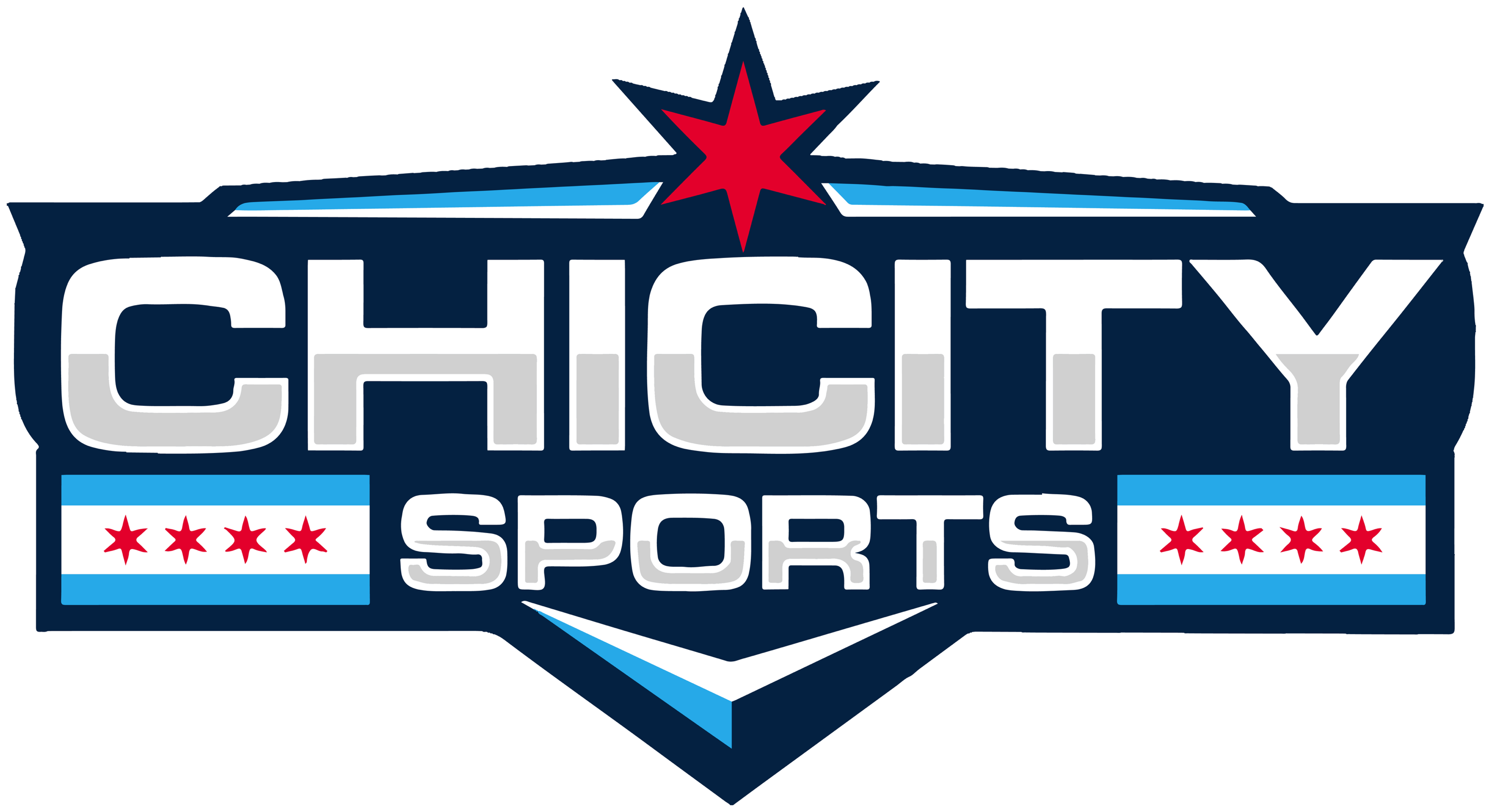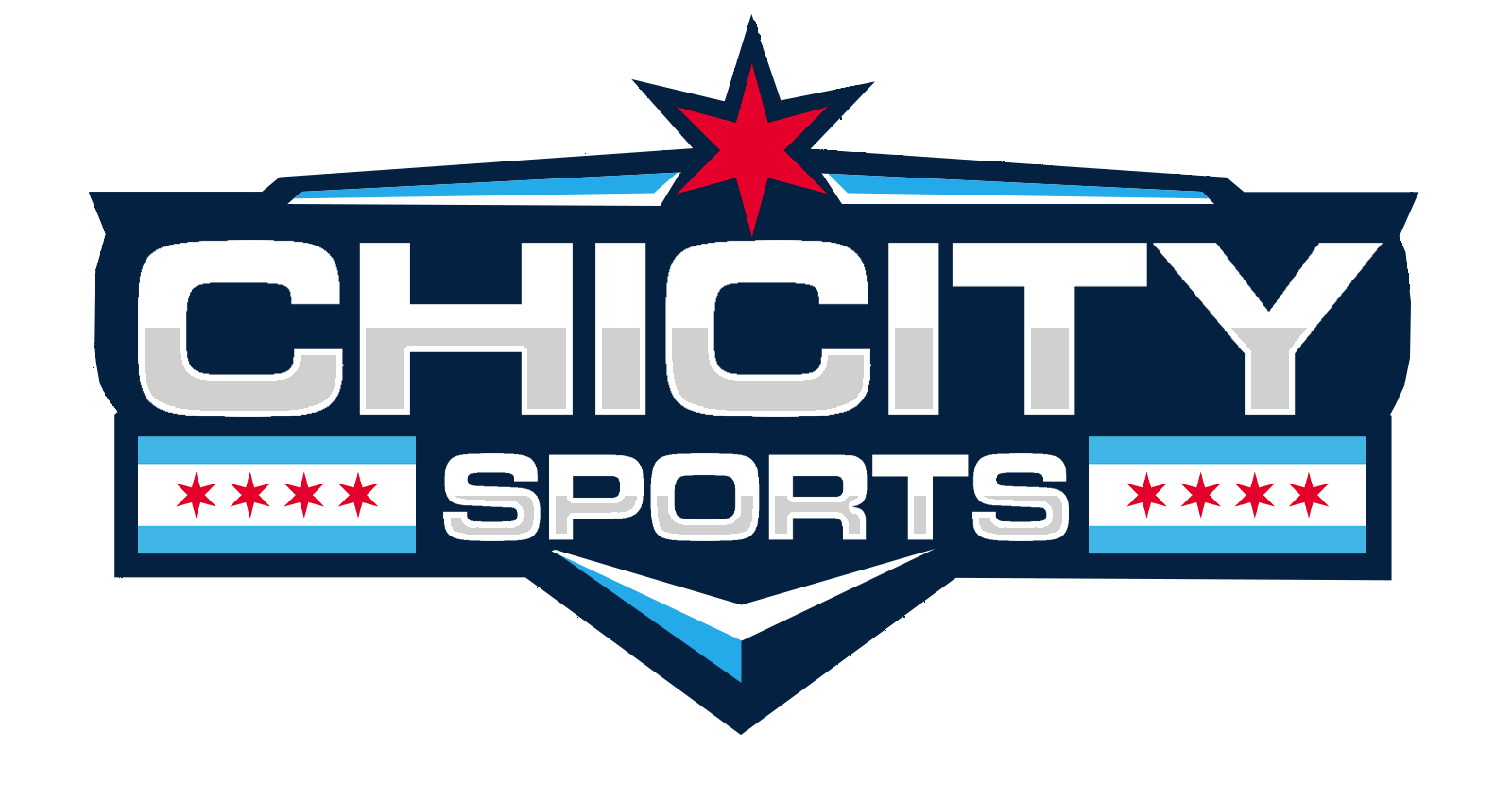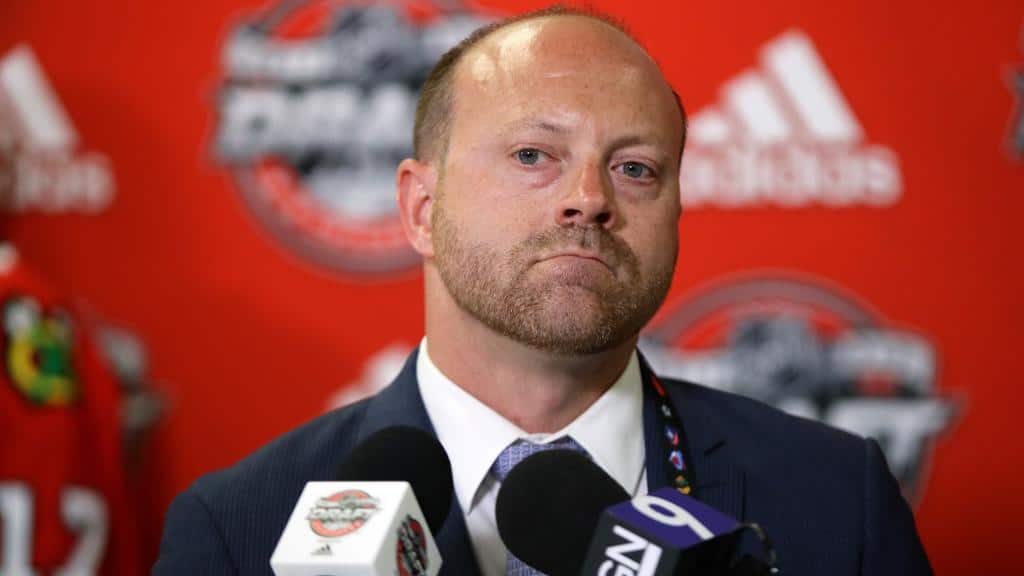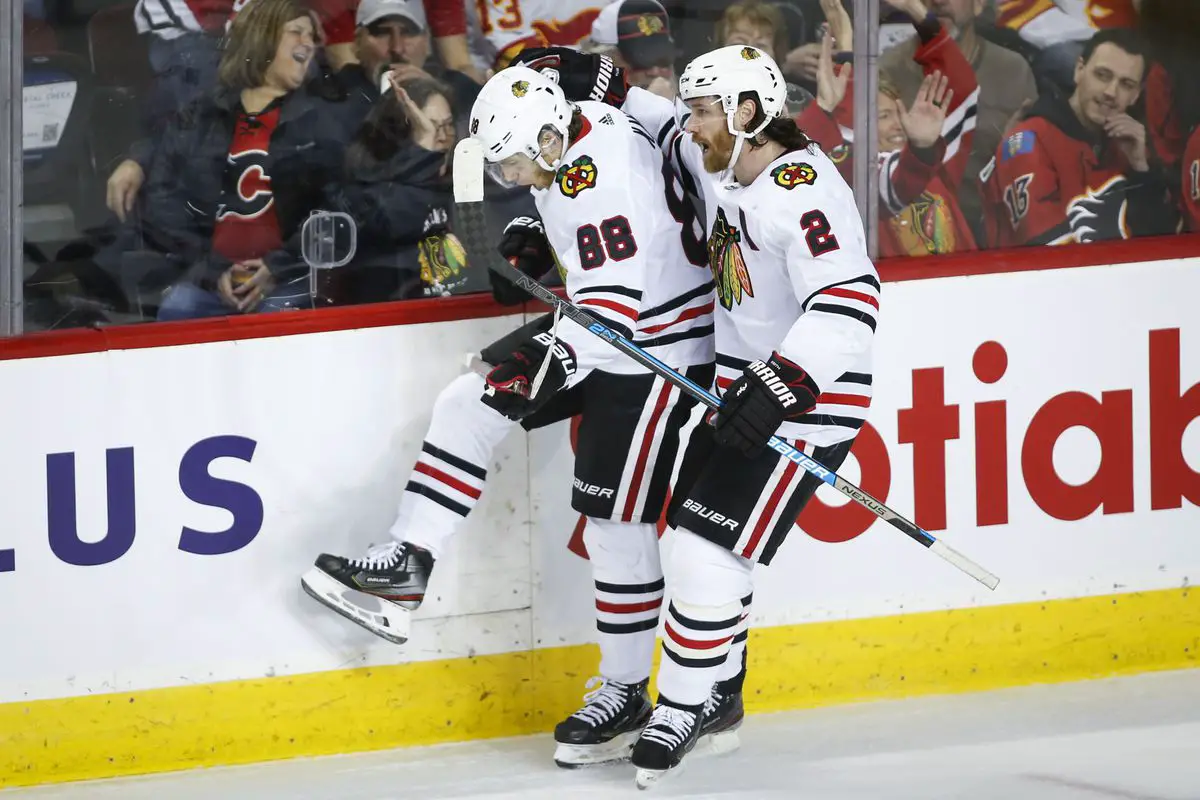After two straight years of missing the playoffs and the firing of a future hall-of-fame coach in Joel Quenneville, this was the year the Hawks would turn it around. Unlike the previous off-season, general manager Stan Bowman came out guns-a-blazing. He shored up the blue line by adding Calvin de Haan and Olli Maatta, replacing previous off-season acquisitions Brandon Davidson and Brandon Manning. He added more grit with Andrew Shaw, utilizing his go-to move of re-acquiring ex-Hawk players over the years (Campbell, Sharp, Oduya, Kruger, Versteeg, Ladd, Saad). He added Ryan Carpenter — a supposed improvement over the prior off-season acquisition Chris Kunitz — and traded for Zack Smith.
He even decided to improve his top-six by trading one of his most promising defensive prospects in Henri Jokiharju for forward Alex Nylander, utilizing another go-to move of acquiring former young high-draft picks who had failed with their former teams (Tikhonov, Olesz, Morin, Jurco, Dano, Rundblad, Leddy, Perlini, Strome). Lastly, he added the best goaltender on the open market in Robin Lehner, giving the Hawks one of the highest-paid goalie tandems in the league with Corey Crawford.
Yet here we are: almost mid-way through the 2019-2020 season, with the Blackhawks dead last in the Western Conference. Poetically, the Hawks’ latest defeat was delivered by the Colorado Avalanche — a team with a core of Nathan MacKinnon, Gabriel Landeskog, Miko Rantanen, and Cale Makar. The Avs abused the Hawks last night, similarly to how the latter used to — with overwhelming speed and skill. It was the third time the central-division rivals met this year, and the third straight dominating loss the Blackhawks suffered. The loss was a gut-check in that, this is what this currently constructed Hawks team looks like against a bonafide Stanley Cup contender.
So what are the Hawks’ options?
1. Fire Stan Bowman
This is the most obvious and perhaps the most essential step for the organization to turn things around. In the 10+ years since Bowman has been GM, he has either traded away all of his successful draft picks or has selected prospects that have failed to ever mature. Teuvo Teravainen, Nick Schmaltz, Tyler Motte, and Henri Jokiharju were all expected to be part of the next wave of Blackhawks, only to be jettisoned. Teravainen, in particular, has gone on to become a successful top-six player since being traded to Carolina, as he has amassed no lower than 40 points per year, setting a career-high in points last season with 76. In fact, from Bowman’s first five years as GM, the only successful draft picks remaining from those years are Brandon Saad and Andrew Shaw — both of which had to be reacquired after initially being traded by Bowman. All of the other drafted players from 2010 to 2014 either never matured or were traded, including standout center Phillip Danault, who was traded to Montreal for playoff rentals Tomas Fleischmann and Dale Weise.
Like Bowman’s draft-picks, his acquisitions haven’t fared much better during his tenure. Johnny Oduya, Michal Handzus, Brad Richards, Antoine Vermette, Ray Emery, Michal Rozsival, Michal Kempny, and Artemi Panarin were successful acquisitions. In addition to Teravainen, Danault, Carter Hutton, and Nick Leddy, Kempny and Panarin (especially) were the biggest losses for Bowman, as neither necessarily needed to be dealt due to cap restraints. Kempny has become a solid top-four defenseman and a Stanley Cup champion on the Washington Capitals and Artemi Panarin is one of the deadliest offensive producers in the NHL. Although not exhaustive, Bowman’s hits over the years are rare compared to his misses: Fernando Pisani, Andrew Brunette, Kim Johnsson, Chris Campoli, Steve Montador, Kimmo Timonen, Rob Scuderi, Christian Ehrhoff, Sean O’Donnell, Sami Lepisto, Michael Kostka, Theo Peckham, Jan Rutta, Andrew Desjardins, Ryan Garbutt, Peter Regin, Jiri Sekac, Lance Bouma, Anton Forsberg, etc.
Bowman’s greatest failure has been his inability to properly restock the pipeline. A GM who has been at the helm for 10+ years should have a fuller, more robust cupboard of prospects, if not fully matured NHL-ready players altogether. The only successful pick that Bowman has to show for is Alex Debrincat, who was selected in 2016. His two current highest-regarded picks — defenseman Adam Boqvist and center Kirby Dach — were selected in 2018 and 2019, respectively. Had Bowman been able to properly draft and/or retain at least one or two more players earlier in his tenure, the Blackhawks would not be as shallow as they are now; nor would they need to speed up the development of their two most-recent high-profile draft picks. Instead, the organization now has to desperately rely on both Dach and Boqvist to have an immediate impact in the NHL.
2. Fire Jeremy Colliton
Ever since hall-of-fame coach Joel Quenneville was fired two seasons ago, freshman coach Jeremy Colliton has only made the tail-spin worse. Under Colliton, the Hawks hold a 43-44-15 record. After implementing a man-on-man defensive scheme in replace of Quenneville’s long-run zone system, the results have been atrocious, with odd-man rushes and shots-against skyrocketing. Currently, the Hawks hold the highest percentage of shots against per games played at 36%. Special teams is as bad as it was under Quennville’s last years as well, with the Hawks currently ranked 24th on the power play and 18th on the penalty kill. In the majority of games this year, Hawk goalies Corey Crawford and Robin Lehner have been hung out to dry, having to face 40-50 shots in a single game. Missed assignments, puck watching, turnovers, and chasing have become all too commonplace among Hawk forwards and defensemen alike.
In addition to Colliton’s scheme, his lineup decisions have also created controversy. Last night, Colliton scratched veteran defenseman Brent Seabrook for the third time this season, replacing him with Duncan Keith, who had returned from injury. The decision was particularly curious considering the defensive play of both Eric Gustafsson and Adam Boqvist, who have arguably struggled more so than Seabrook recently. For a team already light on veterans — even before the injuries to Andrew Shaw, Drake Caggiula, and Calvin de Haan — scratching Seabrook while icing Gustafsson, rookie Boqvist, and rookie Dennis Gilbert did more harm than good against a Stanley Cup contender in the Colorado Avalanche.
Of course, some fault needs to be given to the players themselves, but it is the coach’s responsibility to implement a system in which his players can thrive. Colliton was brought in to be a “new voice” in the locker room, but there is little evidence that he has a voice at all, particularly among the veterans. It was understandable that a new coach would have trouble after being hired mid-season — as Colliton was last year — but this year, he had both the majority of last year and an entire off-season in which to solidify his system and gain a pulse on his team. Today, the Hawks have shown little to no improvement since Colliton’s succession. Whether Colliton is yet another fall-guy to be fired by Bowman or if he is let go by a new GM, the Hawks may be destined to cut their losses with the coach either way.
3. Trade your big-guns and kill your darlings in a full-on rebuild
“Darlings” should not be confused with “rookies.” Darlings are players that an organization has high hopes for, even if they’ve been in the league for a few years while being busts on their former clubs. Over the years, Bowman has had many darlings: Brendan Perlini, Viktor Stalberg, Gustav Forsling, Alexander Salak, Jiri Sekac, Marco Dano, Tomas Jurco etc. The most recent and biggest darling is Alex Nylander, who was brought in to be a bonafide top-six option. Drake Caggiula and Dylan Strome are also darlings. In Nylander’s case, he has been anything but a top-six caliber player, yet the Hawks and Colliton seem hell-bent on keeping him there.
If change is necessary, the Hawks will have to realize that a square peg does not fit in a round hole with Nylander; but they will also have to decide if keeping Caggiula and/or Strome is the right move for a rebuilding team. Both Caggiula and especially Strome could net a decent return in picks and prospects; and the fact that both are restricted free agents next year should seriously be considered.
Brent Seabrook and Corey Crawford are the two most logical veterans to move, as both are in their mid-thirties. Crawford is still a solid goaltender, but he will be an unrestricted free agent next year and has a history of concussions. Seabrook has lost a step over the years and many believe his salary doesn’t justify his current level of play. Like Seabrook, Crawford has a no-movement clause, but if the Hawks make it apparent they have no plans to re-sign him, he’d have nothing to lose by waiving said clause at the trade deadline for a playoff contender. Seabrook may be harder to move, considering his contract, which is close to 7 million dollars per year through 2024 — but given his recent public frustrations at being a healthy scratch, he may be able to be moved, especially if the Hawks retain some of his salary.
The tougher question of course will be: should the Hawks trade Toews, Kane, and/or Keith? Even on a rebuilding team, a mentor like any of the aforementioned three would be priceless. All three can still play. Kane is better than ever, regardless of his age or his hefty contract. Keith is an utter bargain at approximately 5 million per year for the next three years. Toews may not be the Toews of old, but he’s still a solid top-six, two-way center who is proficient in the faceoff circle; not to mention, the face of the franchise, along with Kane. Moving any of these players will be difficult, but it may also be necessary, especially if other veterans like Saad and Seabrook are unable to be moved.
It will all depend on whether or not the organization will finally have the guts to implement a full-on rebuild, as opposed to this “rebuild on the fly” they have been executing for years now. A full-on rebuild is never fun,and considering the lack of the Hawks’ pipeline under Bowman’s tenure, will take even longer than usual — but the sooner the organization accepts reality, the quicker meaningful change will occur.
For More Great Chicago Sports Content
Get the latest Chicago sports news, analysis, and breaking stories on the Bears, Bulls, Blackhawks, Cubs, White Sox, Sky, and more! Tap the star to add us to your favorites on Google News, so you never miss a story on your favorite Chicago teams.
Follow us on Twitter at @chicitysports23 for more great content. We appreciate you taking time to read our articles. To interact more with our community and keep up to date on the latest in Chicago sports news, JOIN OUR FREE FACEBOOK GROUP by CLICKING HERE




